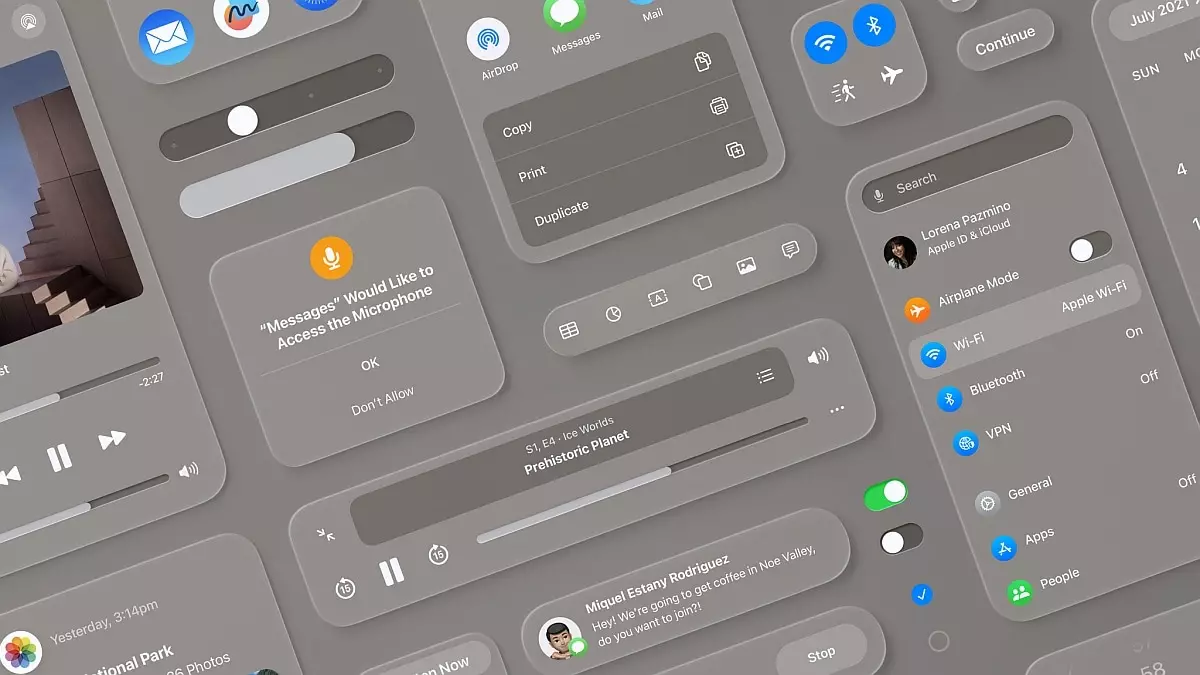After years of incremental updates, Apple is reportedly embarking on a bold redesign of its operating systems—iOS, iPadOS, and macOS. According to claims from industry insiders, this overhaul may mark the most significant shift in user interface design since the launch of iOS 7 nearly a decade ago. Let’s be honest: Apple’s software stagnation has left some users feeling disappointed. These changes can’t come fast enough for those who pine for innovation rather than mere refinements.
Promises of Cohesion Across Devices
Apple is known for its ecosystem, where devices communicate seamlessly. However, many have felt a disconnect between the aesthetics of iOS, iPadOS, and macOS. With redesigned icons and new menus supposedly on the way, this overhaul could be Apple’s answer to creating a more harmonious user experience. Aligning the systems reflects Apple’s desire to unify its hardware and software, making switching between devices smoother. Yet, such efforts might feel redundant if they don’t truly enhance usability. A visually pleasing interface must also be intuitive and functional.
VisionOS Influences: A Step in the Right Direction?
Reports suggest that the redesign is heavily influenced by visionOS, Apple’s operating system for its spatial computing devices. As innovative as visionOS may be, one can’t help but question whether this influence will resonate with traditional users who expect reliability over experimental interfaces. Graphics and design should not overshadow the fundamental functionality we love. If these updates sacrifice core usability in pursuit of aesthetic flair, it could alienate loyal customers rather than attract new ones.
Anticipation vs. Reality
Apple has a history of building anticipation, only to deliver underwhelming updates. Users awaited significant changes with iOS 18, only to face disappointment when the updates failed to materialize. This time, could we again be left high and dry? Skepticism runs deep in the community, as Apple’s past promises raise valid concerns. In a landscape where competition is fierce, the desire for true innovation looms large. Let’s hope Apple doesn’t lean on nostalgia as a crutch but instead embraces the future with courage.
Putting Users First: A Critical Necessity
Above all else, all of this should circle back to user needs. The technological behemoth must remember that its clientele deserves a user experience that’s not only visually stunning but also functional and user-friendly. The bar is set high; Apple cannot afford to ignore constructive feedback from users simply enamored by aesthetic changes. If this redesign prioritizes superficial upgrades while leaving vital functionalities intact, Apple risks losing its core audience, which is a dangerous game for such an influential company.
The upcoming WWDC 2025 promises to be a significant moment for Apple’s software journey; whether this overhaul is a game-changing leap or merely another polish remains to be seen. With this substantial exploration into redesigns, one can only hope that Apple places usability at the forefront of its ambitious endeavors.


Leave a Reply